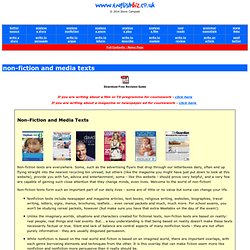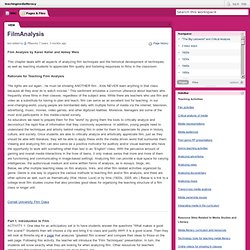

Media Stereotyping: Useful material for civics lessons. MAKING A LION KING INSPIRED MASK. The Hero's Quest. |Arthurian Legend| |Beowulf| |Classical Mythology| |Creation Stories| |Fairy Tales and Folktales| |Homer, The Iliad and The Odyssey| |Mythology Main Page| The all-purpose guide to epic moviesThis chart shows different archetypal roles at work in Harry Potter, Star Wars, and other movies: the hero, the threshold guardian, the trickster, etc.

An Anti-Hero of One's OwnThis TED-ED video (4:11) explores the pattern of the anti-hero using references to Fahrenheit 451 and 1984, among others. Captioned, includes follow-up questions and other support. ArchetypesThis Google Doc lists and describes types of heroes, quests, stages, characteristics, and symbols. Students are invited to find examples. Chart of GodsThis printable handout details the Greek and Roman gods and goddesses, their spheres of influence, symbols, cities, and animals. Comparison of World MythsThis page outlines similarities and differences in world myths. The Hero's JourneyDetailed resource of the elements of the hero's journey. Mise En Scene Analysis. Cinematic Terms - A FilmMaking Glossary. FilmSound.org: dedicated to the Art of Film Sound Design & Film Sound Theory.
[mediateacher] - Film Teaching Guides. Englishbiz - nonfiction & media. © 2014 Steve Campsall Download Free Revision Guide If you are writing about a film or TV programme for coursework - click here If you are writing about a magazine or newspaper ad for coursework - click here While exam questions vary, the skills you need to write a good answer do not.

As with all texts you'll be studying, it comes down to your ability to detect what effects the text is creating on its reader and to work out why these effects were created - that is, the writer's purpose. Remember - with media and non-fiction texts, while your focus (because this is an English exam...) must always be on language choices, you'll also be asked to consider visual aspects too, such as design, layout and use of images). In the exam, typically, you'll be asked to analyse a pair of texts that share a common theme. There are four useful 'levels' at which you can consider texts: What the text is about- its subject matter You need to show you have understood the text's subject matter and content. 1. 2. Teachingmedialiteracy / FilmAnalysis. Film Analysis by Karen Keller and Abbey Weis This chapter deals with all aspects of analyzing film techniques and the historical development of techniques, as well as teaching students to appreciate film quality and fostering responses to films in the classroom.

Rationale for Teaching Film Analysis “His lights are out again…he must be showing ANOTHER film…Kids NEVER learn anything in that class because all they ever do is watch movies.” This sentiment emulates a common utterance about teachers who frequently show films in their classes, regardless of the subject area. While there are teachers who use film and video as a substitute for having to plan and teach, film can serve as an excellent tool for teaching. As educators we need to prepare them for this “world” by giving them the tools to critically analyze and deconstruct the rapid flow of information that they commonly experience. Cornell University Film Class Part 1. A. B.